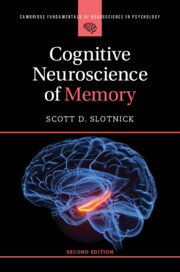Refine search
Actions for selected content:
379 results
Chapter 7 - Michael Field and Lyric
- from Part II - Forms and Genres
-
-
- Book:
- Michael Field in Context
- Published online:
- 03 October 2025
- Print publication:
- 25 September 2025, pp 59-67
-
- Chapter
- Export citation
Perceptions et attitudes des personnes âgées souffrant d’insomnie par rapport aux médicaments et aux produits de santé naturels
-
- Journal:
- Canadian Journal on Aging / La Revue canadienne du vieillissement , First View
- Published online by Cambridge University Press:
- 19 September 2025, pp. 1-12
-
- Article
- Export citation
Cold and hot consumption and health outcomes among US Asian and White populations
-
- Journal:
- British Journal of Nutrition , First View
- Published online by Cambridge University Press:
- 18 September 2025, pp. 1-15
-
- Article
-
- You have access
- Open access
- HTML
- Export citation
Case 38: - Insomnia Disorder
- from Part 1: - Vignettes
-
- Book:
- Practise Psychiatry
- Published online:
- 04 September 2025
- Print publication:
- 18 September 2025, pp 341-346
-
- Chapter
- Export citation
Impaired emotional memory dissipation in insomnia disorder
-
- Journal:
- Psychological Medicine / Volume 55 / 2025
- Published online by Cambridge University Press:
- 01 September 2025, e260
-
- Article
-
- You have access
- Open access
- HTML
- Export citation
Are we just dreaming?
-
- Journal:
- Research Directions: Sleep Psychology / Volume 2 / 2025
- Published online by Cambridge University Press:
- 22 August 2025, e9
-
- Article
-
- You have access
- Open access
- HTML
- Export citation
Co-occurrence of severe fatigue and insomnia: implications for the outcome of cognitive behavioural therapies
-
- Journal:
- Behavioural and Cognitive Psychotherapy , First View
- Published online by Cambridge University Press:
- 18 August 2025, pp. 1-15
-
- Article
-
- You have access
- Open access
- HTML
- Export citation
Inferior turbinate hypertrophy predicts adenoid hypertrophy in children with obstructive sleep disorders
-
- Journal:
- The Journal of Laryngology & Otology , First View
- Published online by Cambridge University Press:
- 30 July 2025, pp. 1-3
-
- Article
- Export citation
Chapter 6 - Normal Adult EEG
- from Part I - Basics
-
- Book:
- How to Read an EEG
- Published online:
- 27 September 2025
- Print publication:
- 24 July 2025, pp 57-68
-
- Chapter
- Export citation
Chapter 12 - Developing Resilience
- from Part II - Practising Compassion
-
- Book:
- Handbook of Compassion in Healthcare
- Published online:
- 27 June 2025
- Print publication:
- 17 July 2025, pp 98-105
-
- Chapter
-
- You have access
- Open access
- HTML
- Export citation
Chapter 6 - Sleep and Respiration
-
-
- Book:
- Clinical Neurorespiratory Medicine
- Published online:
- 26 May 2025
- Print publication:
- 19 June 2025, pp 50-57
-
- Chapter
- Export citation

Cognitive Neuroscience of Memory
-
- Published online:
- 12 June 2025
- Print publication:
- 30 January 2025
-
- Textbook
- Export citation
13 - How Do Adolescents Think About Risk and Reward?
- from Section III - Adolescence
-
- Book:
- Child Development
- Published online:
- 19 June 2025
- Print publication:
- 12 June 2025, pp 194-212
-
- Chapter
- Export citation
9 - The Importance of Self-Care
- from Part III - Lifestyle Changes and Maintenance of Recovery
-
- Book:
- The BFRB Survival Guide
- Published online:
- 26 May 2025
- Print publication:
- 12 June 2025, pp 175-197
-
- Chapter
- Export citation
Effects of substituting TV-watching time with physical activities or sleep on incident major depression. Results from the lifelines cohort study
-
- Journal:
- European Psychiatry / Volume 68 / Issue 1 / 2025
- Published online by Cambridge University Press:
- 30 May 2025, e73
-
- Article
-
- You have access
- Open access
- HTML
- Export citation
Cognitive behavioural therapy for sleep problems in psychosis: systematic review of effectiveness and acceptability
-
- Journal:
- The British Journal of Psychiatry , FirstView
- Published online by Cambridge University Press:
- 22 May 2025, pp. 1-16
-
- Article
-
- You have access
- Open access
- HTML
- Export citation
Optimising preterm infant nutrition: valuing the potential of melatonin in breast milk
-
- Journal:
- British Journal of Nutrition / Volume 133 / Issue 9 / 14 May 2025
- Published online by Cambridge University Press:
- 16 May 2025, pp. 1153-1156
- Print publication:
- 14 May 2025
-
- Article
- Export citation
Social drivers of sleep experiences: Conversations with midlife working-class women from Mexico city
-
- Journal:
- Research Directions: Sleep Psychology / Volume 2 / 2025
- Published online by Cambridge University Press:
- 24 April 2025, e7
-
- Article
-
- You have access
- Open access
- HTML
- Export citation
Sleep and schizophrenia polygenic scores in non-affective and affective psychotic disorders
-
- Journal:
- Psychological Medicine / Volume 55 / 2025
- Published online by Cambridge University Press:
- 15 April 2025, e117
-
- Article
-
- You have access
- Open access
- HTML
- Export citation
A network approach to lifestyle behaviors and health outcomes in people with mental illness: the MULTI+ study III
-
- Journal:
- European Psychiatry / Volume 68 / Issue 1 / 2025
- Published online by Cambridge University Press:
- 11 April 2025, e53
-
- Article
-
- You have access
- Open access
- HTML
- Export citation
